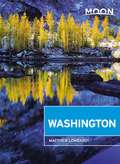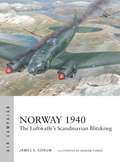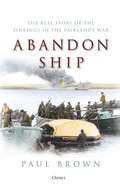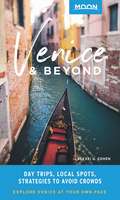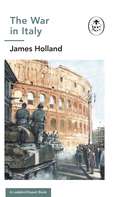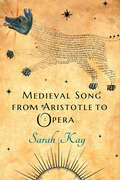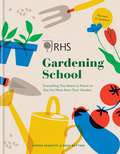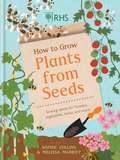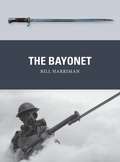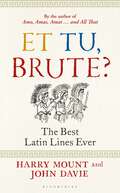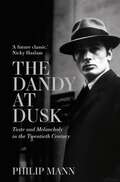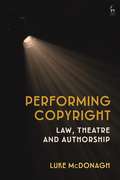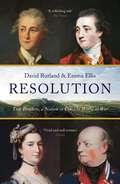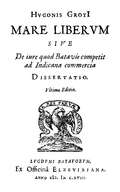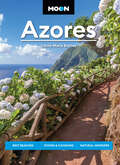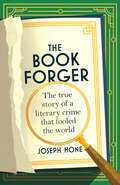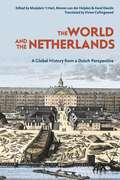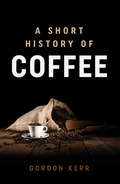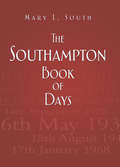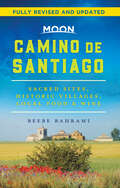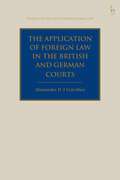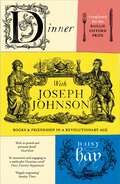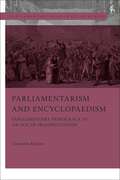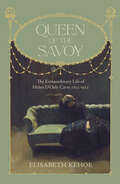- Table View
- List View
Moon Washington (Travel Guide)
by Matthew LombardiDiscover Washington with Moon Travel Guides!Whether you're headed to top of the Space Needle or Mount Rainier, explore the unique culture and rugged wilderness of the Evergreen State with Moon Washington.Strategic itineraries that can adapted for your budget and timeline, including day trips from Seattle, excursions to the Olympic Peninsula or the San Juan Islands, and a two-week tour of the entire stateCurated advice for outdoor adventurers, foodies, culture and history buffs, and moreCan't-miss experiences and unique activities: Kayak across glacier-carved lakes, or explore the sub-alpine forests and high-country meadows of Mount Rainier National Park. Spot wild black bears and spotted owls, or head out to sea to witness migrating gray whales. Wander the pebble-strewn beaches of the Pacific Coast, get to know the charms of Tacoma and Bellevue, and explore the history of aeronautics at the Museum of Flight. Savor Seattle's vibrant culinary, music, and arts scenes, grab a world-renowned cup o' joe, or taste your way through Washington wine countryExpert insight from Seattle local Matthew LombardiHonest advice on when to go, how to get around, and where to stay, from secluded forest cabins to historic hotels and coastal B&Bs Full-color photos and detailed maps throughout Focused coverage of Seattle, the Olympic Peninsula and the Coast, the San Juan Islands and North Puget Sound, the North Cascades, Mount Rainier and the South Cascades, the Columbia River Gorge and Wine Country, and Eastern WashingtonThorough background information on the culture, landscape, climate, and wildlife, plus handy recommendations for international visitors, traveling with kids, LGBTQ+ travelers, and travelers with disabilitiesWith Moon Washington's practical tips, myriad activities, and local know-how, you can plan your trip your way.Spending more time in the city? Try Moon Seattle. Hitting the road? Check out Moon Pacific Northwest Road Trip.
Norway 1940: The Luftwaffe’s Scandinavian Blitzkrieg (Air Campaign #22)
by James S. CorumThe German invasion of Norway was a pivotal moment in modern warfare, the first joint campaign that featured air power as an equal element of all operations. It was, in fact, the superior use of their air force that gave the Germans the decisive margin of victory and ensured the failure of the Allied counter-offensive in central Norway in April and May 1940.All aspects of air power were employed in Norway, from long-range bombing and reconnaissance to air transport, with the Luftwaffe's ability to transport large numbers of troops and supply ground forces over great distances being particularly important. Norway was the first campaign in history in which key targets were seized by airborne forces, and the first in which air superiority was able to overcome the overwhelming naval superiority of an enemy.Researched from primary sources, this engaging history by air power expert Dr James Corum skilfully draws out where and why air power made the difference in Norway, and analyses the campaign's influence on the coming months and years of World War II.
Abandon Ship: The Real Story of the Sinkings in the Falklands War
by Paul BrownWhen Argentinian forces invaded the Falklands in April 1982, the British government responded by despatching a task force to the Atlantic to wrest back control of the islands. The resulting war saw modern weapon systems tested in combat for the first time, to tragic effect. In the aftermath, official documents were released, but many were heavily censored, and others withheld altogether, so that a full understanding of those events could not be gained. Drawing from recently declassified and previously unpublished reports from the official inquiry, Dr Paul Brown details the true story behind the dramatic events that led to the loss of six British ships – HMS Antelope, Ardent, Coventry and Sheffield, RFA Sir Galahad and SS Atlantic Conveyor – as well as the controversial sinking of the Argentinian cruiser ARA General Belgrano by HMS Conqueror.
Moon Venice & Beyond: Day Trips, Local Spots, Strategies to Avoid Crowds (Travel Guide)
by Alexei J. CohenFrom Venetian Renaissance art to corner trattorias, dig into the city known as La Serrenissima ("Her Most Serene") with Moon Venice & Beyond.Explore In and Around the City: Get to know Venice's most interesting neighborhoods, like San Marco, Cannaregio, and Castello, and nearby areas, including Padua, Vicenza, Verona, the Dolomites, and moreGo at Your Own Pace: Choose from tons of itinerary options designed for foodies, history buffs, art lovers, and moreSee the Sights: Gaze at the golden mosaics lining the ceiling of St. Mark's Basilica, step inside the grand Doge's Palace, walk across the Rialto Bridge, and take a gondola ride through the city's winding canalsGet Outside the City: Linger in the colorful fishing village of Burano or the romantic city of Verona, and marvel at the Giotto frescoes in Padua Savor the Flavors: Sample traditional seafood dishes, unbeatable sweet treats, and classic cicchetti (a delicious assortment of finger foods)Experience the Nightlife: Relax at a canal-side bar, chat with locals as the wine decants at a rustic enoteca, and sip locally-produced ProseccoGet to Know the Real Venice: Follow local suggestions from Italian transplant Alexei CohenFull-Color Photos and Detailed MapsHandy Tools: Background information on Venetian history and culture, plus tips on ethical travel, what to pack, where to stay, and how to get aroundDay trip itineraries, favorite local spots, and strategies to skip the crowds: Take your time with Moon Venice & Beyond.Exploring more of Italy? Check out Moon Florence & Beyond or Moon Milan & the Italian Lakes.
The War in Italy: (WW2 #8) (The Ladybird Expert Series #14)
by James Holland* PRE-ORDER YOUR COPY NOW *- Why did the Allies decide to invade Southern Italy?- How did the weather and Italian terrain complicate the fighting?- How did General Mark Clark's Allied Armies win the final battle?Discover the mounting conflict and complex campaigns of the war in Italy. From Operation HUSKY to Clark's final offensive, the Allied campaign tightened the noose around Nazi Germany and saw the end of Italian Fascism, though it was at a cost of high civilian casualty and destruction.AN EPIC OF GRIT, DETERMINATION AND SACRIFICEWritten by historian, author and broadcaster James Holland and with immersive illustrations by Keith Burns, THE WAR IN ITALY 1943-1945 is an accessible and enthralling introduction to these critical battles and their impact on the outcome of World War II
Medieval Song from Aristotle to Opera
by Sarah KayFocusing on songs by the troubadours and trouvères from the twelfth to the fourteenth centuries, Medieval Song from Aristotle to Opera contends that song is not best analyzed as "words plus music" but rather as a distinctive way of sounding words. Rather than situating them in their immediate period, Sarah Kay fruitfully listens for and traces crosscurrents between medieval French and Occitan songs and both earlier poetry and much later opera. Reflecting on a song's songlike quality—as, for example, the sound of light in the dawn sky, as breathed by beasts, as sirenlike in its perils—Kay reimagines the diversity of songs from this period, which include inset lyrics in medieval French narratives and the works of Guillaume de Machaut, as works that are as much desired and imagined as they are actually sung and heard. Kay understands song in terms of breath, the constellations, the animal soul, and life itself. Her method also draws inspiration from opera, especially those that inventively recreate medieval song, arguing for a perspective on the manuscripts that transmit medieval song as instances of multimedia, quasi-operatic performances. Medieval Song from Aristotle to Opera features a companion website (cornellpress.manifoldapp.org/projects/medieval-song) hosting twenty-four audio or video recordings, realized by professional musicians specializing in early music, of pieces discussed in the book, together with performance scores, performance reflections, and translations of all recorded texts. These audiovisual materials represent an extension in practice of the research aims of the book—to better understand the sung dimension of medieval song.
RHS Gardening School: Everything You Need to Know to Get the Most from Your Garden
by Simon Akeroyd Dr Ross BaytonKeen amateur gardeners and aspiring professionals can learn from the expertise of the RHS with this handy guide.It doesn't matter if you're an old hand at gardening or just starting out, there are always things to discover and opportunities to improve, whether it's mastering a new technique or brushing up on your botany.RHS Gardening School is the perfect guide for gardeners who want to learn. Inside you'll find chapters on:Understanding plants Everyday garden care Problem solvingPlanting designGardening through the yearand much more. Hands-on guidance and step-by-step instructions explain topics such as pruning, pest and diseases, weed removal and caring for lawns. Expert gardeners explain the underlying principles in plain English, while clear diagrams and beautiful photographs inspire and inform.Become a better, smarter, more productive gardener with this complete guide to horticulture in one handy book.
RHS How to Grow Plants from Seeds: Sowing seeds for flowers, vegetables, herbs and more
by Sophie CollinsHow To Grow Plants From Seeds does away, once and for all, with the idea that there's something difficult about growing direct from seed. There's no need to rely on the professionals to raise seedlings for you: seeds are not only cheap to buy and environmentally friendly but, if you follow a few basic rules, they're also fantastically rewarding, not least because a single packet will usually leave you with plenty of spares to swap with fellow enthusiasts.Whether you're a novice or an experienced gardener, if you want to nurture an impressive cutting garden or aim to have a bounteous harvest of fruit and vegetables, here's what you need to know, presented in a straightforward and accessible way. You'll discover the basic rules for different seeds, their sowing preferences (Indoor, under cover or direct- to-plot? Surface-sow or cover up? Water or spray?), how long they take to germinate, and how to prick out, pot on and raise your infant plants to become sturdy, productive adults.The book opens with a basic primer showing how seeds work, to give every grower the best chance at success. This is followed by extensive chapters on raising food and flowers from seed with plenty of detailed plant profiles included, and finally there's a guide to collecting seeds from your plants and how to save and swap - so that you, too, can become a seed evangelist.
The Bayonet (Weapon)
by Bill HarrimanAlthough muskets delivered devastating projectiles at comparatively long ranges, their slow rate of fire left the soldier very vulnerable while reloading, and early muskets were useless for close-quarter fighting. Consequently, European infantry regiments of the 17th century were composed of both musketeers and pikemen, who protected the musketeers while loading but also formed the shock component for close-quarter combat. The development of the flintlock musket produced a much less cumbersome and faster-firing firearm. When a short knife was stuck into its muzzle, every soldier could be armed with a missile weapon as well as one that could be used for close combat. The only disadvantage was that the musket could not be loaded or fired while the plug bayonet was in place. The socket bayonet solved this problem and the musket/bayonet combination became the universal infantry weapon from c.1700 to c.1870. The advent of shorter rifled firearms saw the attachment of short swords to rifle barrels. Their longer blades still gave the infantryman the 'reach' that contemporaries believed he needed to fend off cavalry attacks. The perfection of the small-bore magazine rifle in the 1890s saw the bayonet lose its tactical importance, becoming smaller and more knife-like, a trend that continued in the world wars. When assault rifles predominated from the 1950s onwards, the bayonet became a weapon of last resort. Its potential usefulness continued to be recognized, but its blade was often combined with an item with some additional function, most notably a wire-cutter. Ultimately, for all its fearsome reputation as a visceral, close-quarter fighting weapon, the bayonet's greatest impact was actually as a psychological weapon. Featuring full-colour artwork as well as archive and close-up photographs, this is the absorbing story of the complementary weapon to every soldier's firearm from the army of Louis XIV to modern-day forces in all global theatres of conflict.
Et tu, Brute?: The Best Latin Lines Ever
by Harry Mount John DavieThere are so many Latin phrases in everyday use that often we use them without understanding the background and context within which they were actually used. 'Carpe diem'; 'Stet'; 'Memento mori'; 'Et tu Brute' – examples would fill a book. And often these phrases are also used in English translation: 'The die is cast'; 'crossing the Rubicon'; 'Rome was not built in a day'. Many of these phrases are humorous, but they are also a rich source of wisdom: the wisdom of the ancients. The chapters of this book include: Life's Misfortunes and how to deal with them; How to deal with old age (Cicero); Why Death is nothing to fear (Lucretius); The Stoic guide to life. Each chapter starts with a quotation and is lightly sprinkled with many more, with accompanying English translations.The background to each quotation is explained so that the context is fully understood. Who crossed the Rubicon and why, for example? At a time of great political and social turbulence, more and more people are turning back to ancient wisdom as a guide to life. Here they are in touch with two classical scholars of distinction who have the common touch.
The Dandy at Dusk
by Philip MannPhilip Mann chronicles the relationship of dandyism and the emerging cultural landscape of modernity via portraits of Regency England's Beau Brummel – the first dandy – and six twentieth-century figures: Austrian architect Adolf Loos, the Duke of Windsor, neo-Edwardian courtier Bunny Roger, writer and raconteur Quentin Crisp, French film producer Jean-Pierre Melville, and New German Cinema enfant terrible and inverted dandy Rainer Werner Fassbinder. He blends memorable anecdotes with acute analysis to explore their style, identity and influence and interweaves their stories with an entertaining history of tailoring and men's fashion. The Dandy at Dusk contextualizes the relationship between dandyism, decadence and modernism, against the background of a century punctuated by global conflict and social upheaval.
Performing Copyright: Law, Theatre and Authorship
by Luke McDonaghBased on empirical research, this innovative book explores issues of performativity and authorship in the theatre world under copyright law and addresses several inter-connected questions: who is the author and first owner of a dramatic work? Who gets the credit and the licensing rights? What rights do the performers of the work have? Given the nature of theatre as a medium reliant on the re-use of prior existing works, tropes, themes and plots, what happens if an allegation of copyright infringement is made against a playwright? Furthermore, who possesses moral rights over the work?To evaluate these questions in the context of theatre, the first part of the book examines the history of the dramatic work both as text and as performative work. The second part explores the notions of authorship and joint authorship under copyright law as they apply to the actual process of creating plays, referring to legal and theatrical literature, as well as empirical research. The third part looks at the notion of copyright infringement in the context of theatre, noting that cases of alleged theatrical infringement reach the courts comparatively rarely in comparison with music cases, and assessing the reasons for this with respect to empirical research. The fourth part examines the way moral rights of attribution and integrity work in the context of theatre. The book concludes with a prescriptive comment on how law should respond to the challenges provided by the theatrical context, and how theatre should respond to law. Very original and innovative, this book proposes a ground-breaking empirical approach to study the implications of copyright law in society and makes a wonderful case for the need to consider the reciprocal influence between law and practice.
Resolution: Two Brothers. A Nation in Crisis. A World at War
by David Rutland Emma EllisJohn Manners, Marquis of Granby, famously led a cavalry charge during the Seven Years War in 1760, losing both hat and wig. A commander of skill and courage, he was cherished by his men and lauded by the British public as an authentic military hero. Granby predeceased his father, the 3rd Duke of Rutland, and never inherited his title, but left two sons whose contrasting fortunes and tragically short lives are the subject of this meticulously researched and richly illustrated book. Charles became 4th Duke in 1779, sought reconciliation with the American colonies and was Viceroy of Ireland; Robert embarked on a naval career, became flag captain of the Resolution and died of injuries sustained at the Battle of the Saintes. Based upon the detailed archives held at Belvoir Castle, Resolution is both an enthralling saga of two generations of the Manners family and a finely delineated portrait of aristocratic, political and naval life in mid-Georgian England.
Mare liberum: Sive De iure quod Batavis competit ad indicana commercia dissertatio
by Hugo de GrootMare liberum
Moon Azores: Best Beaches, Diving & Kayaking, Natural Wonders (Travel Guide)
by Carrie-Marie Bratley Moon Travel GuidesExperience the breathtaking and unspoiled islands that await just a short hop from mainland Portugal with Moon Azores. Inside you'll find:Strategic, flexible itineraries for exploring individual islands or combining them into a longer trip, with coverage of Porto and Lisbon The top outdoor adventures: Cave-dive into the depths of an extinct volcano, soak in a steaming hot spring, and catch some sun on Santa Maria's golden sand beaches. Dive or snorkel in crystalline waters filled with shipwrecks and colorful marine life. Spot dolphins, humpback whales, and more on an island cruise and go bird-watching on a lush São Jorge fajã. Hike to stunning viewpoints above Sete Cidades Lake or summit the epic, snow-capped Mount Pico Must-see highlights and unique experiences: Stroll through sprawling gardens and secret grottoes in Terra Nostra Park or sip Gorreana tea at Europe's only tea plantation. People watch over a cup of coffee in the UNESCO historical center of Angra do Heroísmo or admire the famous mariner murals in Horta Marina. Savor fresh seafood and local charcuterie in a seaside village, browse traditional cheeses at a morning market, and sample basalt wines Expert advice from long-time Portugal resident Carrie-Marie Bratley Full-color photos and detailed maps throughoutBackground information on the landscape, history, and cultural customs of the islands Handy tools such as visa information, a Portuguese phrasebook, and tips for LGBTQ+ travelers, seniors, families, and more With Moon's practical tips and local know-how, you can experience the best of the Azores. Heading to the mainland? Check out Moon Portugal.About Moon Travel Guides: Moon was founded in 1973 to empower independent, active, and conscious travel. We prioritize local businesses, outdoor recreation, and traveling strategically and sustainably. Moon Travel Guides are written by local, expert authors with great stories to tell—and they can't wait to share their favorite places with you. For more inspiration, follow @moonguides on social media.
The Book Forger: The true story of a literary crime that fooled the world
by Joseph Hone'Absolutely fascinating . . . A must-read for anyone enthralled by the value and integrity of books' Janice Hallett, author of The Alperton AngelsA true detective story from the age of Agatha Christie and Dorothy L. Sayers: the literary crime that fooled the world - and the daring young booksellers who uncovered itLondon, 1932. Thomas James Wise is the toast of the literary establishment. A prominent collector and businessman, he is renowned on both sides of the Atlantic for unearthing the most stunning first editions and bringing them to market. Pompous and fearsome, with friends in high places, he is one of the most powerful men in the field of rare books.One night, two young booksellers - one a dishevelled former communist, the other a martini-swilling fan of detective stories - stumble upon a strange discrepancy. It will lead them to suspect Wise and his books are not all they seem. Inspired by the vogue for Hercule Poirot and Sherlock Holmes, the pair harness the latest developments in forensic analysis to crack the case, but find its extent is greater than they ever could have imagined. By the time they are done, their investigation will have rocked the book world to its core.This is the true story of unlikely friends coming together to expose the literary crime of the century, and of a maverick bibliophile who forged not only books but an entire life, erasing his past along the way.'The perfect piece of armchair detection' Ruth Ware, author of The Woman in Cabin 10‘Thrilling . . . reads like a detective story from the golden age’ Roland Philipps, author of A SPY NAMED ORPHAN'A great story that is truly stranger than fiction' Martin Edwards, President of the Detection Club
The World and The Netherlands: A Global History from a Dutch Perspective
by Marjolein ’t Hart, Manon van der Heijden and Karel DavidsThis is the first book to examine the history of the country in a way that connects global processes to local developments. Taking account of social, political and economic dynamics over the last thousand years, the book addresses key questions that get to the heart of the Netherlands' role in the world, both historically and in more recent times:· Why did the 'West' become such a significant actor in the world, and what part did the Netherlands play?· What were the driving forces in state-formation, and in what respects and why did the Netherlands take a different path to most of Europe?· How did globalisation impact economic structures and socio-cultural life, and how did the Netherlands react to these new challenges?· How did this very Christian and bourgeois nation develop into a flagship for liberal tolerance?The book carefully balances a wider investigation of these issues with close inspections of how ordinary people experienced the changes they prompted. It also provide a convincing, judicious assessment of the ebbs and flows of this small country's global influence over time: prominent as a Golden Age economic powerhouse, colonial power, and bastion of political freedom in some eras, and yet impotent on the world stage at others. Supplemented with 12 images, 6 maps, a wealth of text boxes, charts and tables, as well as a companion website, this book is the definitive history of the Netherlands in a global context.
A Short History of Coffee
by Gordon KerrHaving conquered the world's taste buds and established itself as a staple in our daily lives, coffee has mirrored the moods and movements of society for centuries - yet, how much do we know about its history?In his riveting new book, A Short History of Coffee, Gordon Kerr investigates the fascinating history behind the global obsession with coffee, from its Ethiopian origins, the legends, myths, geographical locations and somewhat eccentric characters that have helped make it the staple that it is today.Proliferating high streets, towns and cities across Europe, coffee has become increasingly popular in recent years, and has succeeded in creating new and exciting hubs of commerce, news and debate, where deals could be done and revolution could be incited. Yet, despite coffee's very modern role, its origins stretch back to the days of intrepid travellers and merchants, who told tales of this new and exotic beverage that uplifted and enlivened the drinker.Following the growth in popularity through to the 21st century explosion of coffee shop culture, A Short History of Coffee lifts the Styrofoam lid on both the business of coffee, as well as the pleasures that it brings its drinkers. Gordon Kerr masterfully balances an exploration of the history of this iconic beverage, whilst also delving into the frothy brew of business, politics, and money that accompanies it.Praise for Gordon Kerr'Informative, fascinating and extremely well-researched...Gordon Kerr's book is a mini masterpiece' - Rob Minshull, ABC Brisbane on A Short History of the Vietnam War'Factual and even-handed, Kerr presents a fair-minded introduction of basic Chinese history' - Booklist on A Short History of China'Thoroughly rewarding' - Travelmag on A Short History of the Middle East
The Southampton Book of Days
by Mary SouthTaking you through the year day by day, The Southampton Book of Days contains quirky, eccentric, shocking, amusing and important events and facts from different periods in the history of the city. Ideal for dipping into, this addictive little book will keep you entertained and informed. Featuring hundreds of snippets of information gleaned from the vaults of Southampton’s archives and covering the social, criminal, political, religious, agricultural, industrial and military history of the region, it will delight residents and visitors alike.
Moon Camino de Santiago: Sacred Sites, Historic Villages, Local Food & Wine (Travel Guide)
by Beebe BahramiOver 1,200 years old, 500 miles long, and rich with tradition, history, and inspiration: Embark on the trip of a lifetime with Moon Camino de Santiago. Inside you'll find:Strategic trekking advice for walking the Camino, including where to start to get the Compostela certificate and excursions to gateway cities like Santiago, Léon, and Pamplona Unique ideas for enriching your experience: Admire folkloric art and Romanesque churches, stroll through the stone archways and winding alleys of medieval cities, and soak up mountain views as you cross over the Pyrenees and descend into green valleys. See the archaeological site where Europe's oldest humans were uncovered and breathe in the salty ocean air as you finish your journey at the shores of the Atlantic Savor the local flavors: Enjoy authentic jamón serrano, tapas, and Galician wine, or grab cheese and freshly baked bread for a picnic lunch The best detours, festivals, and villages along the way: Linger in Estella, witness the running of the bulls in Pamplona, visit the monastery in Nájera, or sip wine in Cacabelos Essential planning information on when to go, how to get there, where to eat, and where to stay, from pilgrim dorms to private hotels, plus tips on hazards, precautions, and gearExpert advice from Beebe Bahrami, who has walked the Camino more than 20 times, including valuable history and context of the pilgrimage and the sacred sites, landscape, culture, and local etiquette Full-color photos and detailed maps throughout, plus a handy fold-out map of the entire route Helpful resources on Covid and walking the Camino Handy tools and background information including Spanish and French phrasebooks, visa information, volunteer opportunities, and tips for seniors, women traveling alone, religious and secular travelers, and LGBTQ travelers Start your transformative journey with Moon Camino de Santiago&’s expert insight, unique suggestions, and practical advice. About Moon Travel Guides: Moon was founded in 1973 to empower independent, active, and conscious travel. We prioritize local businesses, outdoor recreation, and traveling strategically and sustainably. Moon Travel Guides are written by local, expert authors with great stories to tell—and they can't wait to share their favorite places with you. For more inspiration, follow @moonguides on social media.
Information Rights: A Practitioner's Guide to Data Protection, Freedom of Information and Other Information Rights
by Mr Philip Coppel KC“An essential addition to the bookshelf of any practitioner who has to consider information rights, however often. The book is the best kind of practitioner text: practical and clear, but also scholarly, thoughtful and analytical.” (Sarah Hannett KC, Judicial Review)Retaining the position it has held since first publication, this is the 6th edition of the leading practitioner text on all aspects of information law. The latest edition includes a substantially enlarged set of chapters on appeals, enforcement, and remedies, as well as covering over 250 new judgments and decisions published since the last edition.Information Rights has been cited by the Supreme Court, Court of Appeal and the Tribunals, and is used by practitioners, judges and all those who practise in the field, including journalists. The new edition maintains its style of succinct statements of principle, supported by case law, legislative provisions, and statutory guidance.The work is divided into 2 volumes. Volume 1 is a 1,500-page commentary, with a comprehensive coverage of the data protection regime, freedom of information and environmental information law, as well as other rights of access to official information such as local government legislation and the Public Records Act. There is detailed coverage of appeal and regulatory procedures. Volume 2 comprises extensive annotated statutory material, including the DPA 2018, the UK GDPR, FOIA, Tribunal rules and statutory guidance.Contributors: James Findlay KC, Olivia Davies, John Fitzsimons, Richard Hanstock and Dr Christina Lienen (all of Cornerstone Barristers); Antony White KC, Sarah Hannett KC, Sara Mansoori KC and Aidan Wills (all of Matrix Chambers); Aidan Eardley KC and Clara Hamer (both of 5RB); Rupert Bowers KC and Martin Westgate KC (both of Doughty Street Chambers); Henry King KC and Bankim Thanki KC (both of Fountain Court Chambers); James Maurici KC and Jacqueline Lean (both of Landmark Chambers); Gemma White KC (Blackstone Chambers); Oliver Sanders KC (1 Crown Office Row); Saima Hanif KC (3VB); Jennifer Thelen (39 Essex Chambers); and Simon McKay (McKay Law).
The Application of Foreign Law in the British and German Courts (Studies in Private International Law)
by Alexander DJ CritchleyThis book explores the application of foreign law in civil proceedings in the British and German courts. It focuses on how domestic procedural law impacts on the application of choice of law rules in domestic courts. It engages with questions involved in the investigation and determination of foreign law as they affect the law of England and Wales, Scotland, and Germany. Although the relevant jurisdictions are the focus, the comparative analysis extends to explore examples from other jurisdictions, including relevant international and European conventions. Ambitious in scope, it expertly tracks the development of the law and looks at possible future reforms.
Dinner with Joseph Johnson: Books and Friendship in a Revolutionary Age
by Daisy Hay'Hugely engrossing... An exciting blend of ideas and personalities' John Carey, Sunday Times'Impressive... [An] elegant account... Dinner with Joseph Johnson reminds us of the excitement of a period in which inherited orthodoxies were forensically scrutinised and found lacking' Daily Telegraph________Once a week, in late eighteenth-century London, writers of contrasting politics and personalities gathered around a dining table. The host was Joseph Johnson, publisher and bookseller: a man at the heart of literary life. He was joined at dinner by a shifting constellation of extraordinary people who remade the literary world, including the Swiss artist Henry Fuseli, his chief engraver William Blake and scientists Joseph Priestley and Benjamin Franklin. William Wordsworth and Samuel Taylor Coleridge were among the attendees, as were the poet Anna Barbauld, the novelist Maria Edgeworth and the philosopher Mary Wollstonecraft.Johnson's years as a maker of books saw profound political, social, cultural and religious shifts in Britain and abroad. Several of his authors were involved in the struggles for reform; they pioneered revolutions in medical treatment, proclaimed the rights of women and children and charted the evolution of Britain's relationship with America and Europe.Johnson made their voices heard even when external forces conspired to silence them. In this remarkable portrait of a revolutionary age, Daisy Hay captures a changing nation through the stories of the men and women who wrote it into being, and whose ideas still influence us today.'Inspired... Joseph Johnson was the man who made the [Romantic] revolution possible... Truly a biography of the spirit of the age' Jonathan Bate
Parliamentarism and Encyclopaedism: Parliamentary Democracy in an Age of Fragmentation (Parliamentary Democracy in Europe)
by Giovanni RizzoniThis book explores a specific aspect of modern parliamentarism: its ability to produce and organise political knowledge. The book argues that the very meaning of modern parliamentarism cannot properly be understood without considering the cognitive value which is inherent in the representative function discharged by parliaments, vis-a-vis the political community. It does so by studying the 'encyclopaedic patterns' underlying modern parliamentarism. Exploring the concept from ancient times to modernity, it addresses the fundamental question of the relationship between knowledge and democratic decision-making. This is a truly innovative book; challenging, provocative and asking crucial questions of how parliaments work and legislate.
Queen of The Savoy: The Extraordinary Life of Helen D’Oyly Carte 1852-1913
by Elisabeth KehoeBorn in 1852 in a small coastal town in Scotland, Helen D’Oyly Carte, through academic brilliance and an incredible talent for ‘managing chaos’, developed and ran the world’s foremost top entertainment and hospitality organisation with her husband, Richard D’Oyly Carte (known as D’Oyly). By the age of 30, she was running five Gilbert & Sullivan companies for the Savoy Group in the United States, crossing the Atlantic thirty times, and for the next three decades she ran the Savoy Theatre, the Savoy Hotel, Claridges and Simpson's-in-the-Strand. She was the only one trusted by the prickly, brilliant William Gilbert and Arthur Sullivan, to keep them from breaking apart, as they so regularly wanted to do. From a conventional upbringing, she chose to remain in London after the emigration of her family to Australia, first as an actress, then working alongside D’Oyly – she took over the reins as he became ill in the late 1880s. Until her death in 1913, she flourished and was famous, interviewed and admired, in a competitive, vibrant London that was the centre of world power and commerce. Queen of The Savoy charts Helen’s course from Wigtown to the West End, where running a company with hundreds of employees, led to her fame and fortune. The artists Whistler and Sickert were friends and immortalised her in portraits. She was known in her time as the true founder of the Gilbert and Sullivan franchise and this biography will bring to light, some 110 years after her death, the extraordinary role that she played in one of Britain’s greatest success stories.
